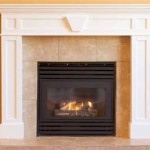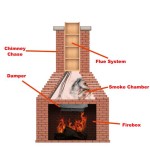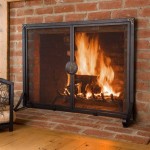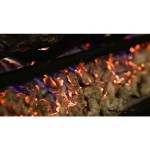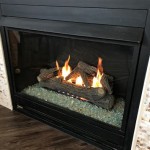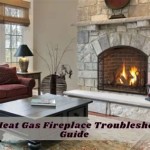Small Outdoor Fireplace: A Guide to Choosing and Enjoying
Small outdoor fireplaces offer a charming and functional addition to any outdoor space. Whether you envision cozy evenings with friends and family, roasting marshmallows under the stars, or simply enjoying the ambiance of flickering flames, a small fireplace can enhance your patio, deck, or backyard. Choosing the right one for your needs and style involves considering several key factors, such as size, fuel type, and design.
Size and Space Considerations
The size of the fireplace is crucial for both aesthetic and practical reasons. A small fireplace is ideal for intimate gatherings and smaller outdoor areas. Consider the dimensions of your space and ensure that the fireplace fits comfortably without overwhelming the area. Smaller fireplaces typically range in size from 24 to 36 inches wide. If you have a larger outdoor space, a larger fireplace might be more suitable for accommodating more people or creating a more dramatic focal point.
The placement of the fireplace is also essential. Ensure that it is positioned away from flammable materials and that there is adequate clearance around it for safety purposes. Additionally, consider the wind direction and how it might affect the flames and smoke. A sheltered location can help minimize smoke and create a more enjoyable experience.
Fuel Types and Maintenance Requirements
Small outdoor fireplaces come in various fuel types, each with its own pros and cons. The most common fuel options include:
- Gas: Gas fireplaces offer convenience, as they can be easily ignited and adjusted. They typically produce less smoke than wood-burning fireplaces and require minimal maintenance. However, they may be more expensive to operate in the long run.
- Wood: Wood-burning fireplaces offer a traditional and authentic experience. They can create a warm and inviting ambiance and can be more cost-effective than gas fireplaces. However, they require more maintenance, including regular cleaning and firewood sourcing. Wood-burning fireplaces can also produce more smoke than gas fireplaces.
- Propane: Propane fireplaces offer a clean and efficient burning experience. They are easy to use and produce minimal smoke. They are also a good choice for areas where wood-burning is prohibited.
- Ethanol: Ethanol fireplaces are becoming increasingly popular due to their clean-burning properties and portability. They do not produce smoke or ash and can be used indoors and outdoors. However, they may be more expensive than other options.
Consider the following factors when choosing a fuel type:
- Convenience: Gas and propane fireplaces offer convenience and ease of use.
- Cost: Wood-burning fireplaces can be more cost-effective in the long run, but they require more maintenance. Gas and propane fireplaces may be more expensive to operate but offer convenience.
- Maintenance: Wood-burning fireplaces require regular cleaning and firewood sourcing. Gas and propane fireplaces require minimal maintenance but may require occasional cleaning of the burner.
- Environmental Impact: Wood-burning fireplaces can contribute to air pollution, while gas and propane fireplaces produce less smoke and emissions.
Design and Style
Small outdoor fireplaces come in a wide range of designs to complement any outdoor space. Choose a style that seamlessly integrates with your existing décor and personal preferences. Some popular design options include:
- Traditional: Traditional fireplaces feature classic stone or brick construction, often with a chimney. They create a timeless and elegant look.
- Modern: Modern fireplaces typically have a sleek, minimalist design with clean lines and contemporary materials such as steel or glass.
- Rustic: Rustic fireplaces often feature natural materials like wood or stone, often with a rough-hewn aesthetic that complements a cabin or farmhouse style.
- Portable: Portable fireplaces are lightweight and easy to move, making them ideal for small spaces or for those who want the flexibility to use them in different locations.
Consider the following features when choosing a fireplace design:
- Materials: Fireplaces are made from various materials, including stone, brick, metal, and concrete. Select materials that are durable, weather-resistant, and complement your outdoor space.
- Shape and Size: Fireplaces come in various shapes and sizes. Choose a design that fits your space and aesthetic preferences.
- Features: Some fireplaces include features like built-in seating, storage compartments, or cooking surfaces. Consider the features that will enhance your outdoor experience.
- Safety Considerations: Ensure that the fireplace you choose meets safety standards and comes with features like a spark screen and a heat-resistant base.
A small outdoor fireplace can add warmth, ambiance, and functionality to your outdoor space. By carefully considering the factors discussed above, you can find the perfect fireplace to create a cozy and inviting atmosphere for your next outdoor gathering.

Small Outdoor Fireplace Ideas

30 Outdoor Fireplace Ideas Cozy Fireplaces

22 Cozy Diy Outdoor Fireplaces Fire Pit And Fireplace Ideas

Outdoor Fireplace Kits Masonry Stone

20 Hardscape Dream Projects Outdoor Fireplace Designs Backyard Patio

Small Outdoor Fireplace Ideas Kits Backyard Patios

Outdoor Fireplaces Round Grove S

Outdoor Fireplace Kits Masonry Stone

Beech Tree Materials Stone Outdoor Fireplaces

Williams Fireplace Project
Related Posts


